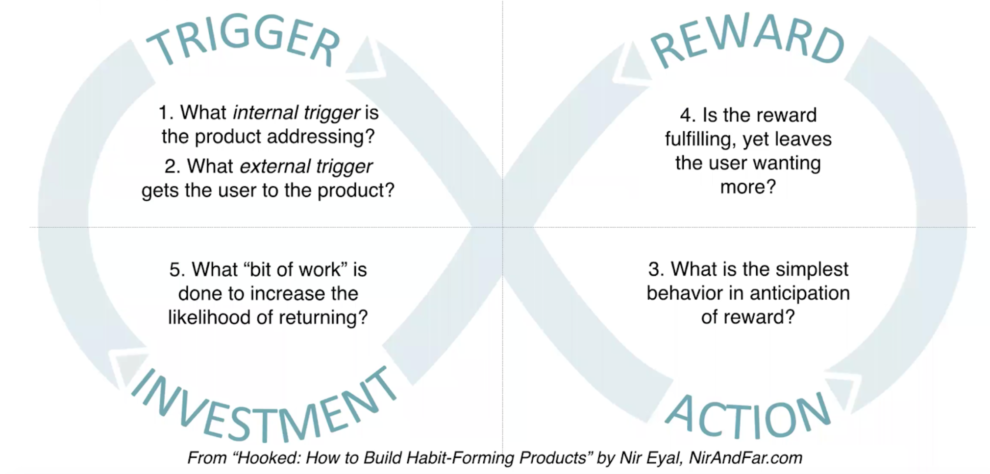Through our habit research, we created the Habit Formation Canvas for News Products to help publishers shape their product strategies. In a recent habit formation workshop with our team, this canvas was used by Aftenposten.
The workshop Twipe facilitated was very inspiring and gave us a new framework we can apply to our products. This has helped us to rethink how we are approaching product development from the very start.
Ingrid Puiggené, Associate Product Manager at Aftenposten
This workshop came as a reward for attending our webinar on habit formation strategies this summer, so make sure to attend our next webinar to benefit from a similar opportunity.
Last week we shared our learnings from the workshop at the Online News Association’s annual event, joined on stage by Ingrid Puiggené, Associate Product Manager at Aftenposten. For those who were not able to make the live session, today we’re sharing some key takeaways as well.
Oppsummert, a digital product for micro news moments
Aftenposten, part of Schibsted, is the biggest subscription newspaper in Norway, and has been focusing on new reading habits in recent years. One of the products they developed to address new reader needs is Oppsummert, or “summarized” in Norwegian. We first heard about Oppsummert during last year’s Digital Growth Summit, where Tor Marius Espedal shared experiments Schibsted had taken to form reader habits. This product reminded us of The Economist’s Espresso, so we are happy to see digital-only editions continue to spring up.
With Oppsummert, in just a few swipes, readers can catch up on the day’s most important stories. The product was sparked by feedback from a reader that wanted to get an update on the news, that allowed them to quickly get up to date and spend their time better. Readers were more often having ‘micro moments’ with the news, where they were consuming news content while on the move or in between other tasks. Oppsummert was designed to be a visually appealing, quick hit of the news to meet these changing needs.

The team tested this product idea in early 2019, with an experiment giving the latest updates on Brexit. This proved to be successful, so the full Oppsummert product was launched over the summer. The team continued to improve the experience based on reader feedback. One key improvement was providing a way for readers to go more in depth with the stories they found interesting. With accordion-style boxes, editors can now add background information or additional context that can help readers better understand the story. This second iteration also includes a daily push notification to alert readers of the new edition. These changes have helped raise traffic to Oppsummert 2.5 times higher than in the first iteration. This growth has continued even during the Coronavirus crisis.
Product habits can be formed
Following our webinar on habit formation strategies this summer, we organised a workshop on this topic with the team at Aftenposten. First we explained habit formation theory, then we conducted an audit of the Oppsummert product in order to make recommendations for improvement.

To make sure we were all starting from the same page, we shared Nir Eyal’s definition of a habit: an impulse to act on a behaviour with little or no conscious thought. As the author of “Hooked“, Nir Eyal is an influential thinker in the world of habits. His “Hook Canvas” is crucial for understanding how to develop habit loops with digital products. Of course, this process needs to be used for ethical means, with the main focus of making news more accessible for all.
Takeaways from Twipe’s habit audit
With this framework in mind, we used our Habit Formation Canvas for News Products to audit Oppsummert’s habit formation strategy. We saw strong points, and also some room for improvement. Three universal learnings came out of the discussion as well. To truly form news habits, we advised Oppsummert to address three main points:
- Know the needs of your readers
- Clearly define your trigger strategy
- Make sure to reward your readers
To start with, the team at Aftenposten needed to understand which of the six key news internal triggers they were addressing with Oppsummert. So while this product does a good job of addressing FOMO, or fear of missing out, we believe humour and entertainment can also be addressed through the addition of puzzles and games.

Secondly, we believe it is important to consider the Fogg behaviour model, which says that for a behaviour to happen, the user must have the motivation, the ability, and a trigger. While Aftenposten had been publishing a push notification as soon as a few stories were ready for Oppsummert, we believe having a more consistent publishing time will help readers develop a habit with the product.
Finally, we looked at how Oppsummert was rewarding readers. After reading the stories of the day, users are shown a screen that says “you are caught up!”. This is a great way of providing readers with the valuable aspect of “finishability“. Being able to complete something and then step away until the next day is a very rewarding feeling. To further improve, we believe the team can look to The Economist’s Espresso digital edition for inspiration. This product rewards readers with a motivational quote after they have finished reading, which has actually been a strong tool for acquisition as readers will often share this quote on social media.
Ultimately this workshop helped the team at Aftenposten clarify parts of their product strategy going forward and motivated them to further experiment. Our team is proud to be part of this unique collaboration. Make sure to attend our next webinar to benefit from similar opportunities in the future.
